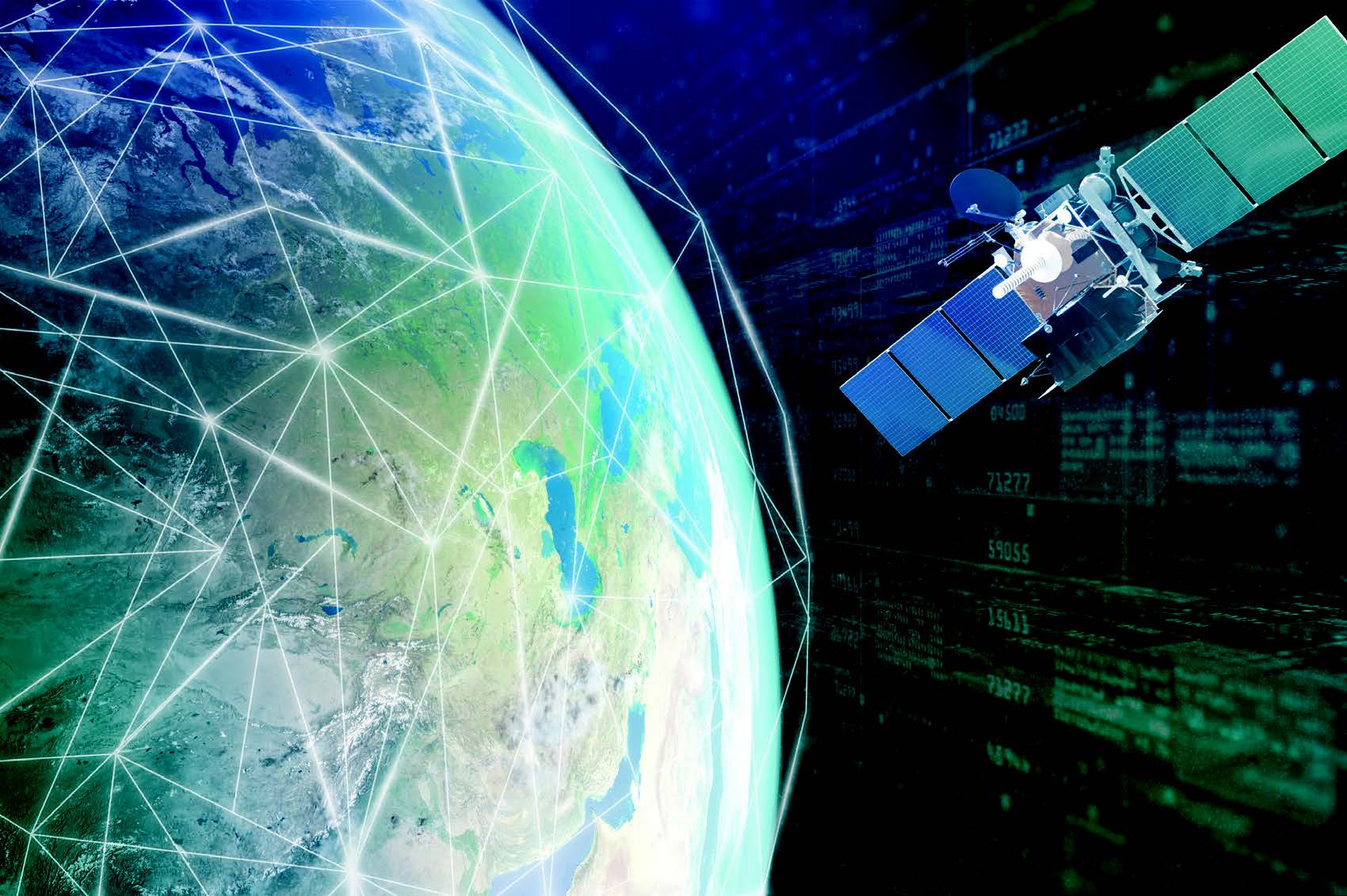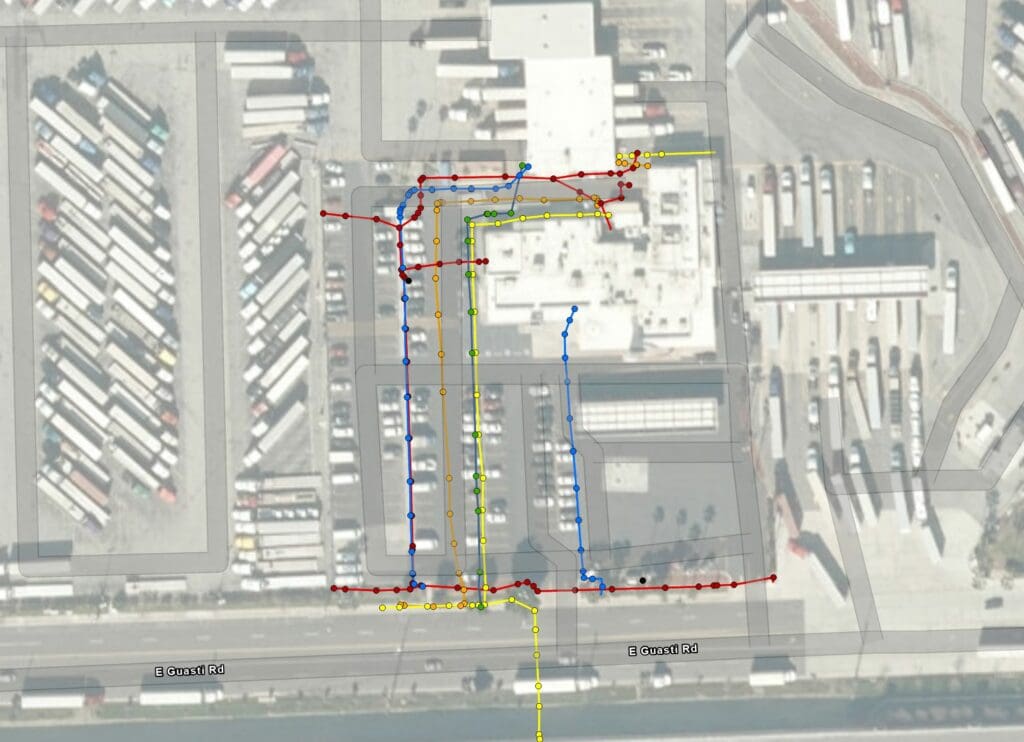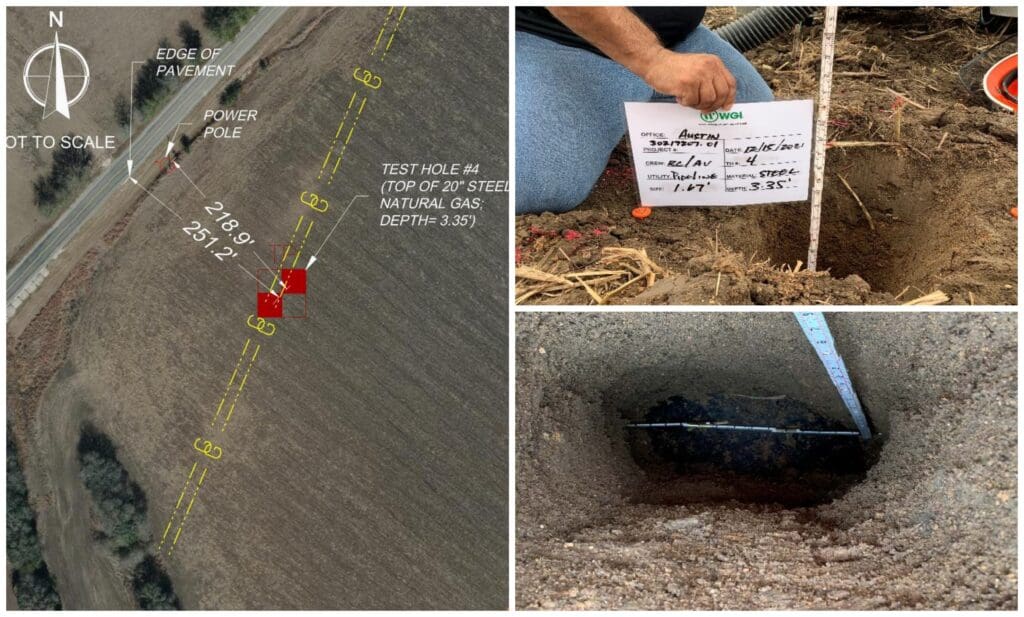
WGI Unleashed Episode 89: Lyndsey Duty, Environmental Scientist
On the latest episode of the WGI Unleashed podcast, we sit down with Lyndsey Duty, one of WGI’s Environmental Scientists based out of our Tampa, FL office!
Learn from award-winning professionals — explore our whitepapers, blogs, and the latest industry updates.
Join our dynamic organization of engineers, land surveyors, landscape architects, environmental scientists, and architects!
Talk to a market leader today! We’ll answer any questions you have about our professional services.

Download this article as a PDF
WGI’s Subsurface Utility Engineering (SUE) team recently incorporated the use of GNSS receivers into its survey work, realizing significant benefits in cost savings and turnaround time for clients. Originating from WGI’s annual Innovation Contest, where our Associates are challenged to envision the future and be the change they seek, this innovation resulted in over 30% savings in labor hours, and over 50% savings in time spent on spatial data processing.
Traditional surveys for SUE work are often time-consuming and require specialized teams and equipment that must be on-site. Precise scheduling is often difficult. As part of the 2021 Innovation Contest, WGI Associates developed a solution and methodology to perform more cost-effective field data collection for SUE and other projects.
“In the past, traditional survey of SUE data was the only option. Paint marks and flags disappear quickly. The need to be resilient and capture SUE data in realtime is now front and center. GNSS solutions and training of SUE field staff is the new model for providing SUE services.”
— Wes Kaisershot, PE, WGI, Inc.
The challenge was exploring an approach that positively affected our business — allowing more accurate and efficient field data collection using smaller, less expensive hardware and user-friendly mobile applications our teams are already using. Put simply, our goal was to capture our field data to an acceptable-grade accuracy using a properly enabled and configured global navigation satellite system (GNSS) receiver coupled with a common mobile device.

In late 2021 and early 2022, WGI deployed the use of GNSS receivers for client work on three projects in Texas, including multiple dry and wet utilities near two multi-use family developments north of Austin, and along a high-pressure gas line in San Marcos. Configuring our GNSS receiver to get signals from five satellite constellations, plus the Network Transport of RTC M via Internet Protocol (NTRIP) correction service, we achieved the necessary accuracy we wanted. The ease of handheld data-collection devices and quality receivers were key to getting the desired results. It was also imperative to understand and apply the correct configuration.
All the components, hardware tools, and operator knowledge working together sharpened our accuracy as appropriate for SUE applications. Post fieldwork, we distributed the information to clients and other project stakeholders in our office via the use of summary dashboards, maps, smart photo attachment viewers, and attribute data cards.
“In general terms, GNSS high-end surveying equipment is more expensive than high-end traditional surveying equipment, but when used for large topographic surveys where centimeter-level accuracy is enough, the added cost of the equipment becomes irrelevant given that it can be much faster than traditional methods.”
– European Space Agency News

As an innovative service provider, we can cost-effectively collect valuable high-accuracy data for our clients. For WGI, real-world use of this inventive idea continues to grow, leading to more experienced associates, and enhancing our capabilities as a unique player in the SUE marketplace — across Texas and the rest of the nation.
Our Associates are more informed about working with GNSS receivers, and understanding the quality control points vital to using the equipment effectively. Data collected onsite is made available for review by technicians and project managers in real-time, using cloud-computing technology.
Our planned next steps are integrating Bluetooth-enabled SUE data collection devices like subsurface pipeline locators directly with the GNSS location signal, resulting in simultaneous horizontal and vertical asset designations. Automated test hole reporting direct from the GIS attribute table is also under evaluation.
The results of our client implementations of this technology and methodology show both quantitative and qualitative benefits for both our clients and WGI. Most significantly, given the speed and efficiency that this data was collected, our team estimates:
Contact our experts today to learn more about WGI’s SUE services.

WGI is a national design and professional services firm leading in technology-based solutions for the construction of public infrastructure and real estate development. At WGI, we’re providing Tomorrow’s Infrastructure Solutions Today.

On the latest episode of the WGI Unleashed podcast, we sit down with Lyndsey Duty, one of WGI’s Environmental Scientists based out of our Tampa, FL office!

WGI’s San Antonio team laced up their running shoes and braved the rain to take on the iconic Rock and Roll 5K – Discover how they turned challenges into triumphs in this memorable event recap!

With a legacy of supporting, empowering, & inspiring women in transportation, the WTS Central Florida’s Annual Awards & Scholarship Banquet was nothing short of a night to remember.

Discover how Austin is transforming urban development with proposed zoning changes, inclusive housing initiatives, and creative space preservation—all while embracing growth and sustainability.

Texas Medical Center made $78M from parking last year. Why haven’t its busiest garages been upgraded in years?

Discover how WGI helped bring Lively Lane to life—a vibrant community in San Marcos that blends sustainable design, live/work townhomes, and natural beauty to create the perfect balance of urban convenience and serenity.
You’ve been searching for a place like WGI. We look forward to meeting you soon.
Sign up to receive emails to hear our latest news and achievements in our monthly newsletter.
Enter your zip code, and we’ll personalize your experience with local projects, office locations, team members, and more.
WGI supports its associates with meaningful opportunities for growth, strong benefits and perks, while we work collaboratively with clients and co-consultants to shape and improve communities.






WGI is a dynamic organization with opportunities nationwide for engineers, land surveyors, landscape architects, environmental scientists, and architects.